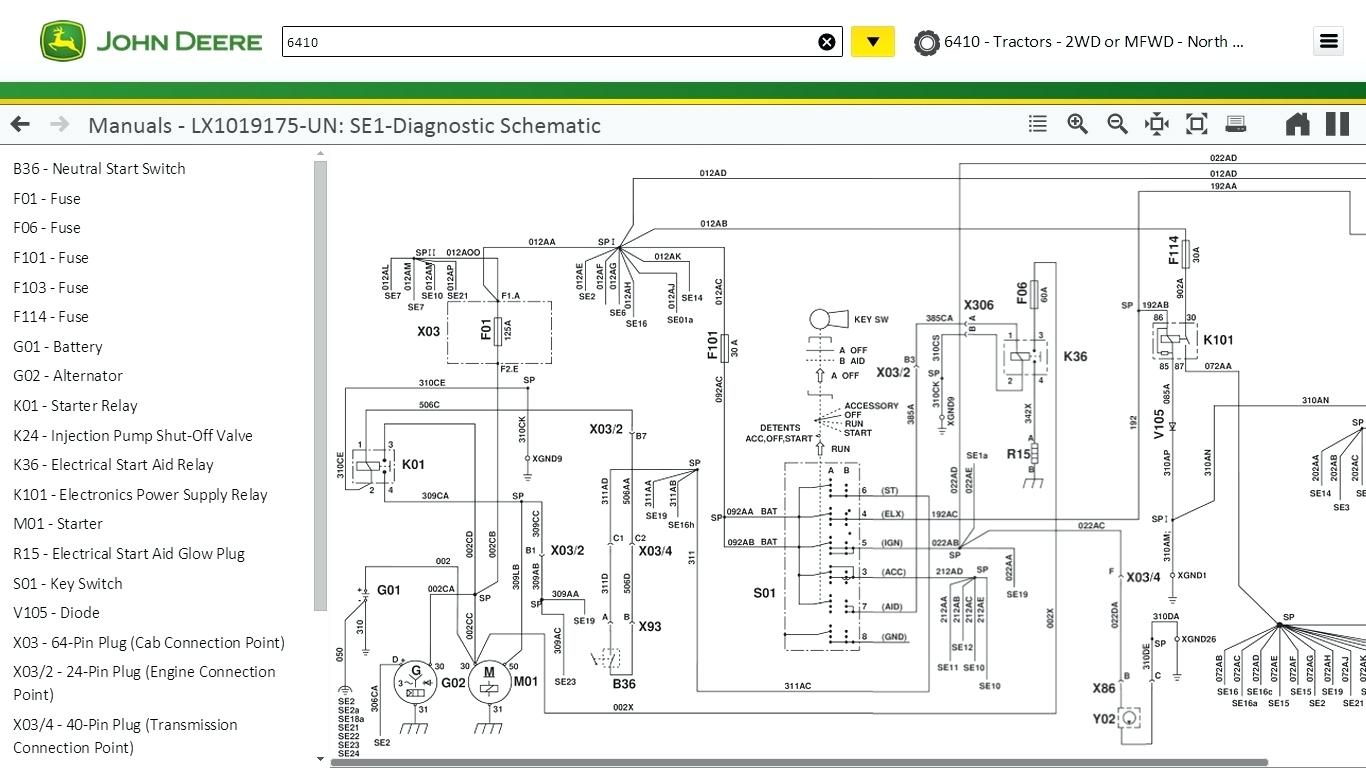Have you ever been out in the field, working hard on a project, when suddenly your John Deere 317G excavator sputters to a halt? The frustration can be immense, especially when you’re facing a deadline or trying to get a critical job done. More often than not, the culprit is an electrical issue, and understanding the fuse panel diagram is your first step to getting back on track. The fuse panel, that little box nestled within your machine, acts as the nervous system, regulating the flow of electricity to ensure everything runs smoothly. Without a clear understanding of its inner workings, diagnosing and fixing electrical problems becomes a guessing game, leading to more frustration and costly downtime. Let’s delve into the world of the John Deere 317G fuse panel diagram and equip you with the knowledge to tackle electrical issues with confidence.

Image: manualliblapith.z13.web.core.windows.net
The fuse panel, a vital component of your John Deere 317G, acts as a protective barrier, safeguarding your machine’s delicate electrical circuits from damage caused by overloads or short circuits. It’s an intricate network of fuses, each designed to protect a specific electrical pathway, ensuring that the flow of electricity remains safe and controlled. The fuse panel diagram serves as the key to deciphering this electrical network, highlighting each fuse’s function and location. With this roadmap in hand, you can quickly pinpoint the source of an electrical fault and replace the blown fuse with a suitable replacement. Having a solid understanding of the fuse panel diagram saves you time, money, and unnecessary frustration, empowering you to take control of your electrical troubleshooting.
A Detailed Dive into the John Deere 317G Fuse Panel Diagram
The fuse panel diagram for the John Deere 317G is a valuable document that helps you navigate the complex electrical system within your machine. It’s essentially a roadmap that maps out the location of each fuse and the circuits they safeguard. Understanding this diagram allows you to quickly identify the culprit when your 317G throws a tantrum and locate the right fuse to replace. Let’s go through the key elements of the diagram:
1. Fuse Panel Layout: The diagram depicts the physical layout of the fuse panel, showing the precise location of each fuse within the box. This visual representation helps you easily identify the target fuse.
2. Fuse Numbering: Each fuse is assigned a unique number, allowing you to quickly reference the diagram and find the appropriate fuse for the circuit you are troubleshooting.
3. Circuit Description: The diagram also outlines the function of each circuit, providing a clear description of the components protected by each fuse. This information helps you pinpoint the potential issue by understanding the role of the affected circuit.
4. Fuse Ratings: The diagram indicates the amperage rating of each fuse, essential for replacing a blown fuse with an identical one. Replacing a fuse with a rating higher than the original can lead to overheating and potential damage to electrical components.
5. Color Codes: Some diagrams utilize color coding to further clarify the function of each fuse. For instance, red might denote the starting system, while yellow could represent the lighting circuits. This color coding aids in rapid identification of the relevant fuse.
Finding and Understanding Your John Deere 317G Fuse Panel Diagram
Obtaining the fuse panel diagram for your John Deere 317G is relatively easy. Here are a couple of reliable sources:
-
Operator’s Manual: The operator’s manual for your machine often contains a detailed fuse panel diagram. Check the electrical systems section of the manual.
-
John Deere Website: The John Deere website offers access to a variety of resources for your machine, including fuse panel diagrams. You can search for your model number to find the relevant information.
-
John Deere Dealer: Your local John Deere dealer is another excellent source for a fuse panel diagram. They can generally provide you with a copy or direct you to the available online resources.
Essential Tips for Using Your Fuse Panel Diagram for Electrical Troubleshooting
Now that you have your fuse panel diagram, let’s explore some tips for effectively using it to troubleshoot electrical issues on your John Deere 317G:
1. Safety First: Before attempting any electrical troubleshooting, always disconnect the battery. Electrical current can be dangerous, so prioritizing safety is paramount.
2. Inspect the Fuse: Once you’ve identified the fuse associated with the affected circuit, carefully inspect it for signs of damage. Look for a broken wire inside the fuse or signs of melting. If you observe any of these, you’ve found your culprit!
3. Replace the Fuse: When you replace a blown fuse, it’s essential to use a fuse with the same rating as the original. Replacing it with a higher rating can lead to overheating and damage to the electrical system.
4. Investigate the Cause: Replacing the blown fuse may temporarily fix the issue, but remember to investigate the underlying cause of the malfunction. A blown fuse might be a symptom of a more significant problem like a short circuit or a faulty component.
5. Don’t Overlook Other Potential Causes: While the fuse panel diagram is a valuable tool, remember that electrical issues can stem from other sources, such as loose connections, damaged wires, or faulty switches. Thoroughly inspect these components as well.

Image: therepairmanual.com
John Deere 317g Fuse Panel Diagram
Conclusion
The John Deere 317G fuse panel diagram is your trusted companion for navigating the intricacies of your machine’s electrical system. Understanding this diagram empowers you to troubleshoot electrical issues with confidence, saving you time, frustration, and unnecessary expenses. By following the tips outlined above and utilizing your diagram effectively, you can keep your John Deere 317G running smoothly and efficiently. Remember to always prioritize safety when working with electrical systems and don’t hesitate to consult a qualified technician for assistance if you encounter any difficulties.





